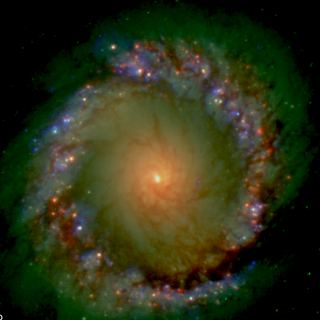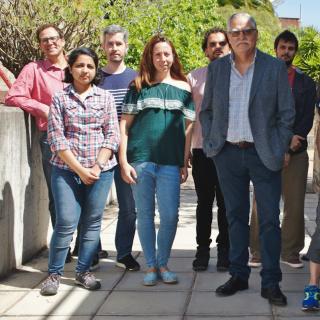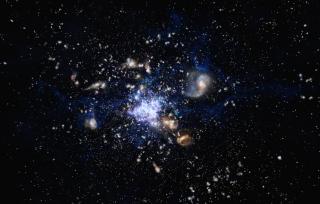General
Numerical simulation through complex computer codes has been a fundamental tool in physics and technology research for decades. The rapid growth of computing capabilities, coupled with significant advances in numerical mathematics, has made this branch of research accessible to medium-sized research centers, bridging the gap between theoretical and experimental physics. Astrophysics is no exception to this trend. Since the late 1970s, a specialized field known as computational astrophysics has emerged, allowing us to understand a wide range of phenomena that were previously inaccessible to pure theoretical research and to account for previously unexplained observations.
In recent decades, its primary areas of application have included (magneto)hydrodynamic phenomena and gas dynamics in various cosmic environments. For example, this includes the interiors and atmospheres of stars and planets, the interstellar medium, including magnetohydrodynamics and dynamos, accretion disks, the evolution of planetary nebulae, supernova explosions and remnants, and more. The incorporation of radiative transport equations into numerical simulations, which occurred in past decades, has added greater realism to the study of hydrodynamic processes in stellar photospheres and chromospheres.
The current project aims to support the development of astrophysical research at the IAC based on the use of large numerical codes that require massively parallel computers and their connection with observational results. The general objective of this project is to perform calculations related to cosmic fluid dynamics and radiative transport. The topics of these calculations will focus on:
1. Magnetized gas dynamics in the interiors and atmospheres of stars.
2. Radiation transport and polarization signals in spectral lines based on realistic atomic and molecular models, including Hanle and Zeeman effects.
3. Comparing theoretical/numerical results with observational data.
This project is particularly relevant given the increasing involvement of the IAC in national and European supercomputing networks and, more generally, in large-scale supercomputer installation initiatives.
Members
Results
In the following, we highlight the results of our annual year-end summary.
Throughout the year 2022, partial ionization effects, nonequilibrium ionization effects, and multi-fluids have been one the main blocks of development both from the theoretical and numerical perspective. For instance, a generalization of the the Braginskii 1965 equations has been achieved for a general multi-species plasmas with arbitrary masses and temperatures, and where all of the viscosities and heat fluxes in the model are described by their own evolution equations. This new approach has a crucial advantage that the parallel components along the magnetic field lines do not become unbounded (infinitely large) in regimes of low-collisionallity of interest for this group as, for example, the solar corona (Hunana et al. 2022). In this thematic block, 2D and 3D simulations, using a two-fluid model that treats the neutral and ionized species as two separate components, have also been performed to analyze the effect that the collisional interaction between both components has on the dynamics of coronal rain, the evolution of the instability of Kelvin-Helmholtz, the propagation of magneto-acoustic waves through the solar chromosphere or the heating of the plasma (Martínez-Gómez et al. 2022a). Another example of the theoretical development with potential numerical applications has been the pursuit of the effects of the ambipolar diffusion in the chromosphere from a more fundamental perspective by means of analytical solutions. The obtained solutions for cases with cylindrical symmetry are shown to constitute a demanding, but nonetheless viable, test for magnetohydrodynamic (MHD) codes that incorporate ambipolar diffusion. In addition, detailed tabulated runs of the solutions have been made available public for the community (Moreno-Insertis et al. 2022). Lastly, nonequilibrium ionization effects of the Hydrogen atom together with the study of the Lyman α effects have been started to study in simple configurations to be applied later in realistic simulations that include the chromosphere.
Improving and testing the capabilities of the available MHD codes in the solar group has been another of the major key developments carried out in 2022. For example, the results obtained by Moreno-Insertis et al. 2022 were used to check that the MHD Bifrost code is able to reproduce the theoretical solutions with sufficient accuracy up to very advanced diffusive times, as well as to explore the asymptotic properties of these theoretical solutions. In addition to that, several changes have been performed in the MANCHA code whose aim was to increase the efficiency and to add new features that will allow the researchers to perform more realistic experiments as well as exploring new research areas. For instance, MANCHA code has been extended to be able to simulate solar simulations up to the corona, adding a new module that efficiently calculates one of the key ingredients in the corona: the thermal conduction (Navarro et al. 2022). The preparation of the MANCHA code for its multi-fluid extension with radiation has also been another working branch concerning the numerical development in 2022. In addition, new equation-of-state and opacity routines have been developed that allow separating the equilibrium background contributions from those treated out of the equilibrium. Besides facing different challenges in solar physics, the huge development brought about in MANCHA is useful to study main sequence cool stars (G,K,M), which contributes to the better understanding of the stellar physics. To accomplish all these tasks, it was necessary not only to carry out numerous scaling tests and numerical experiments in local machines at the IAC, as well as on Supercomputers such as LaPalma, PICASSO, PizDaint, and MareNostrum4; but also to work together with external collaborators.
During 2022, in this project there has also been a focus on different solar atmosphere phenomena and the corresponding comparison with observations. As an illustrative example, Coronal Bright Points (CBPs) have been modeled for the first time with enough realism to unravel the mechanisms that generate them and provide them with energy, being also able to explain different characteristics observed from space satellites. The comparison with observations is through synthetic SDO/AIA, Solar Orbiter EUI-HRI, and IRIS images that have been computed from the numerical experiment performed with the Bifrost code (Nóbrega-Siverio and Moreno-Insertis, 2022). Another example is the combination of 3D numerical experiments with the MoLMH code and forward modelling using Hα line to study transverse kink oscillations in prominence threads. The results contain relevant implications for the field of prominence seismology, showing that the Hα emission can be used to detect the fundamental mode of the oscillations (Martínez-Gómez et al. 2022b). In addition, ground high-resolution observations of ejective phenomena such as surges in the solar atmosphere have been analyzed, finding striking similarities with results obtained from numerical experiments. On top of that, there have also been significant contributions from the members of this project to the further advance of the observations and construction of new telescopes (Quintero et al. 2022) and satellites (De Pontieu et al. 2022, Cheung et al. 2022), using the earned knowledge from the theoretical-numerical experiments. Finally, an exploratory first attempt at understanding the physics of coronal holes and active regions from a global point of view through 2D magnetohydrostatic solutions was performed (Terradas et al. 2022), which will need of further development in the incoming years for comparisons with observations.
Last but not least, state-of-the-art tools such as the ones provided by Machine Learning and Bayesian statistics have been applied to solar atmosphere problems. In this vein, a project to characterize the limits of the k-means methods and its application to solar observations was launched. In addition, new development in radiative transfer codes have being started to use in a preliminary study of machine learning approach to the computations of radiative terms. Development of the application of Bayesian techniques to the comparison of models in seismology of the solar atmosphere continued in 2022, with a review article published that accounts for the main results obtained in the last decade (Arregui 2022a). Moreover, the Bayesian formalism has been successfully applied to the prediction of the amplitude of the solar activity cycle, proposing a new methodology to quantify the goodness of both the prediction and the underlying model (Arregui 2022b).



